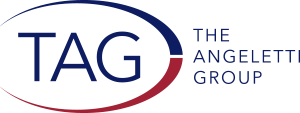Accelerate Your Grateful Patient Program with Physician Engagement
In the last decade, hospitals and health systems have increasingly accepted two closely-related points: that a patient who appreciates the care he or she received is among the best prospects for a gift; and that the participation of that patient’s physician in the process can be the deciding factor. Quoting below and borrowing heavily from the Advisory Board’s outstanding research, we know that they and other caregivers are the people of greatest influence in grateful patients’ decisions to give.
As the Advisory Board has posited, even when solicited by trustees and hospital administrators, prospective donors often will consult their physician contacts regarding the importance of the requests. No leading medical center can realize its fundraising potential without support from its physicians.
Successfully implementing physician engagement initiatives is one of the greatest challenges faced by healthcare fundraisers. Today’s physician engagement realities are harsh:
- Greater emphasis on seeing more patients while earning less.
- Challenging, sometimes acrimonious, contract negotiations.
- “Revered physicians” who once ran hospitals now function as “line workers” while “the suits” reap big paydays.
- Perceptions of HIPAA, even if dated, hinder cooperation.
- Physicians, like most people, don’t want to compromise their relationships – and development work scares them.
These realities can hinder physician-fundraiser partnerships. Below, we offer tips for getting out in front of these concerns to foster truly beneficial physician partnerships. The medical centers succeeding in grateful patient fundraising have used these strategies to create physician engagement initiatives that celebrate revered physicians, involve them in the planning process, and ultimately result in their meaningful partnership, acting as spokespeople and ambassadors, playing a leading role in philanthropy councils, and even – in certain cases – soliciting gifts directly.
- Build a senior, collaborative team of top hospital administrators and board members to create your broader grateful patient strategy.
- Begin recruiting physicians and nurses; as the Advisory Board notes, “start with the physicians who are favorably inclined – especially those respected by their peers-” and who will advocate among their colleagues and with others in their spheres of influence. Include both star physicians and new recruits.
- Develop incentives for physicians to participate; the Advisory Board recommends the following opportunities: a) The ability to raise funds for programs that live within their service lines, b) Allowing physicians who raise monies to be co-signers on philanthropy accounts, and c) Providing matching funds to physicians who raise philanthropy for system-endorsed service line priorities.
- Bring in your development team. It is imperative that your organization fosters a trusting relationship between your development team and the clinical participants.
- Create a plan with input from these administrators, clinicians, and development officers. This integrated group will determine the objectives of the grateful patient program, which prospects to engage, the metrics of success, specific service lines or projects to emphasize, and roles and responsibilities. Physicians must be engaged at this stage in setting goals and priorities including encouragement to raise money for the specific projects they are personally interested in.
- Emphasize the physician’s role “as a luminary, champion and story teller,” not as a solicitor.
- Go light on “training” – at least initially. The last thing most physicians need is another meeting listening to an administrator or development person in a sterile conference room that reminds them of the downsides of what medicine has become. Begin with an invitation they will accept – for example dinner with your most high-profile and charismatic trustee – at a venue people can’t otherwise access. And include spouses. Celebrate physicians. Bring them on the inside of planning. And thank them.
- Design a physician engagement communications plan that includes informal and formal communications to support this new initiative: individual meetings (that’s the time, at least initially, for informal education), internal newsletters, service line collateral and development tools highlighting HIPAA-compliant development guidelines.
We hope these tips for combining the power of physician engagement with a collaborative team approach can help your healthcare organization build or enhance its grateful patient program.


